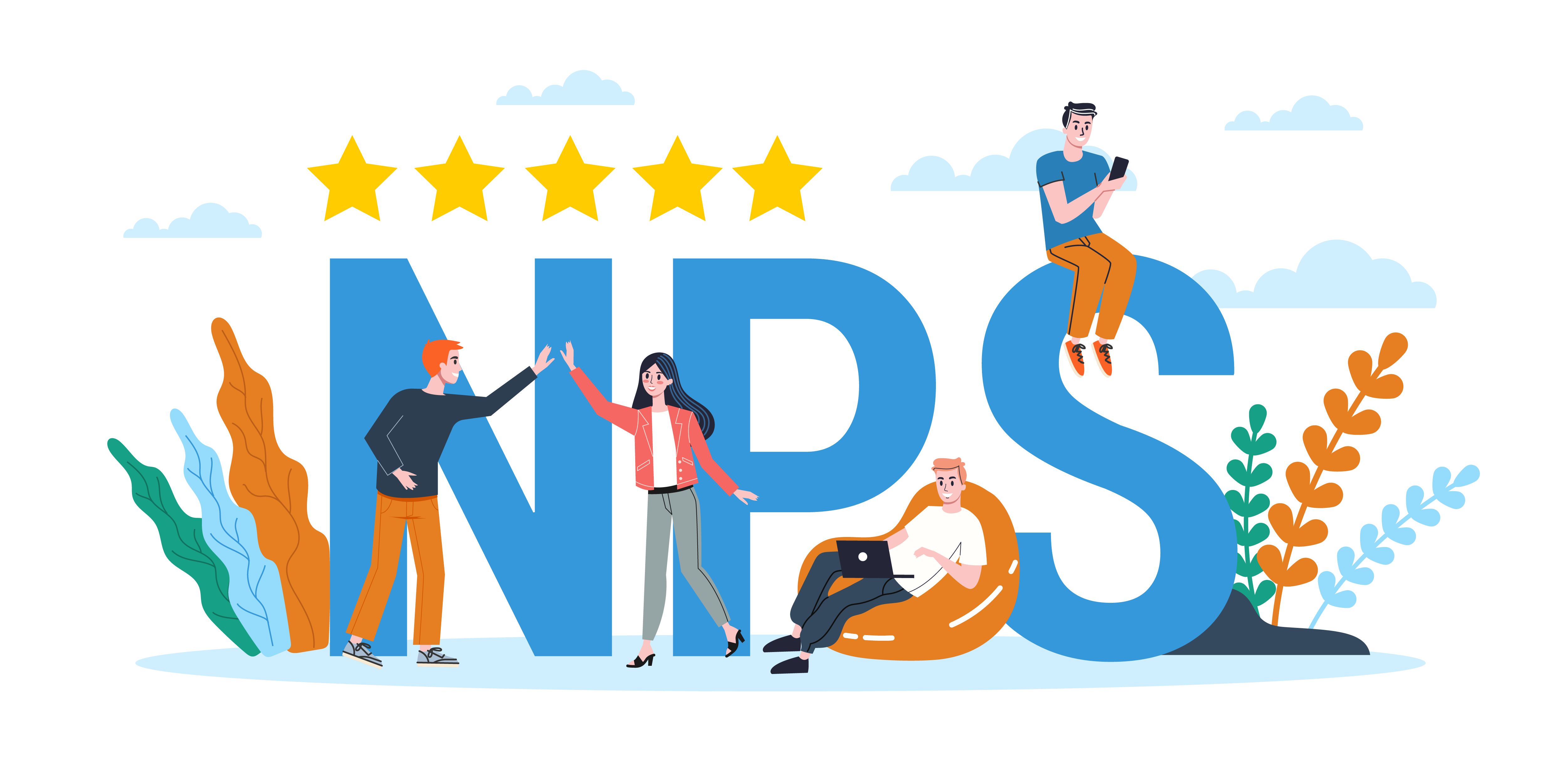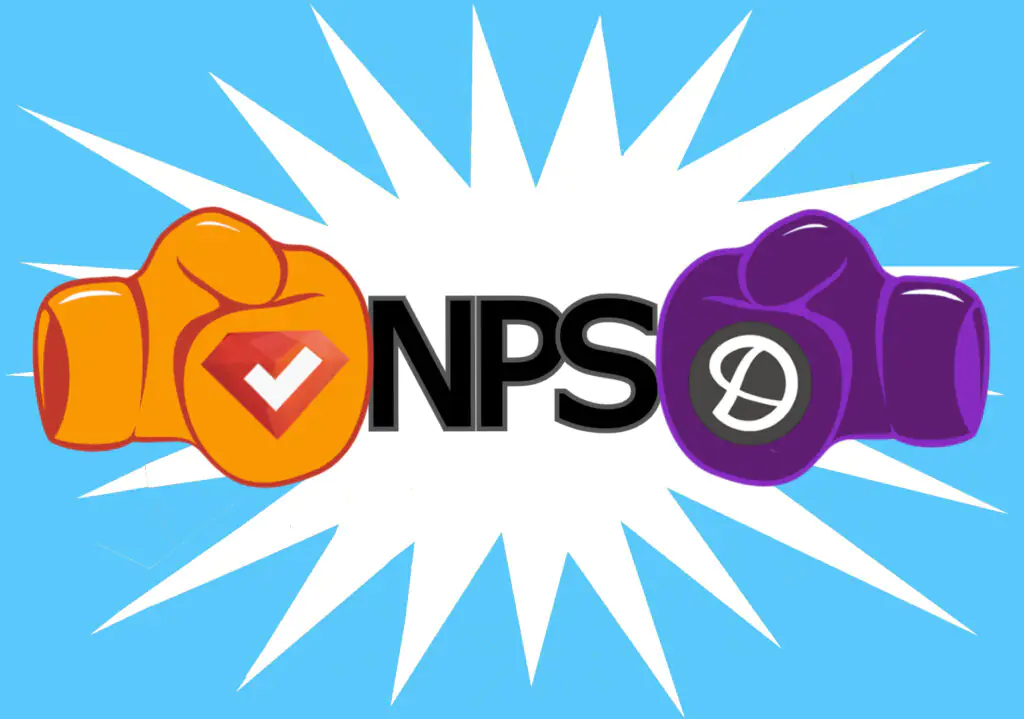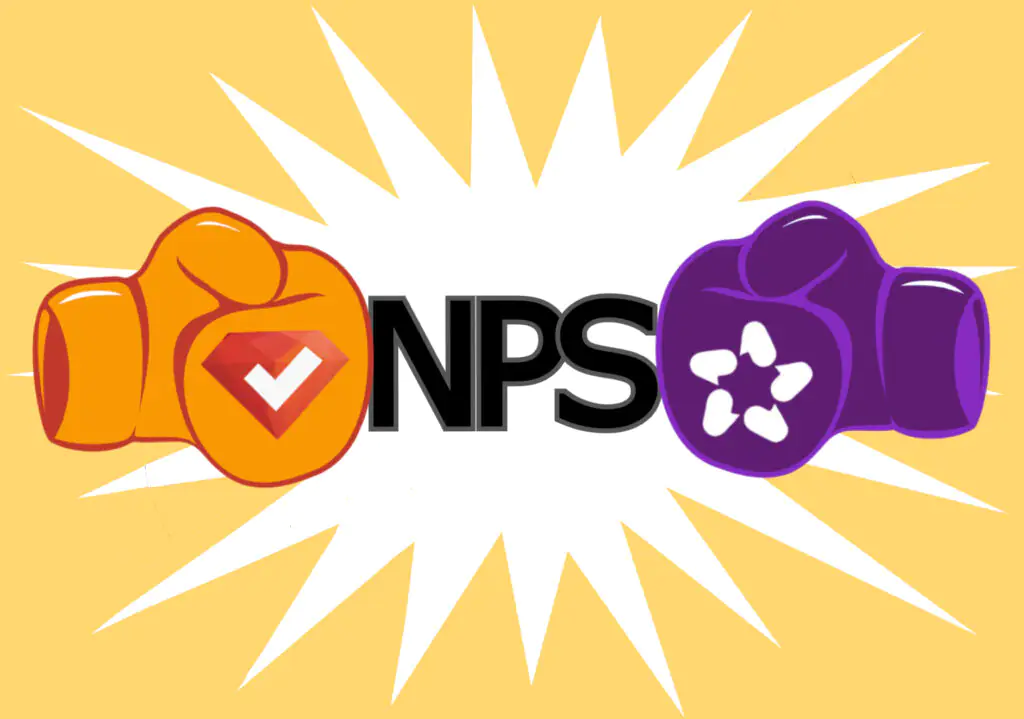Word of mouth is often said to be one of the best, if not the best, forms of advertising. Word of mouth marketing drives $6 trillion of annual consumer spending and is estimated to account for 13% of consumer sales. In addition, people are 90% more likely to trust and buy from a brand recommended by a friend. This makes understanding your Net Promoter Score® (NPS) and conducting NPS surveys all the more critical.
Create your first NPS survey, form, or poll now!
What Is a Net Promoter Score?
A Net Promoter Score (NPS) is a customer loyalty score. It ranges from -100 to 100, and is calculated by asking customers how likely they would be to recommend your product or service to a friend or colleague, on a scale of one to ten. The resulting data helps companies improve their products or services to increase their score, thus building customer loyalty and creating enthusiastic brand advocates.
Calculating Your NPS
Not a numbers person? Fear not—calculating your NPS is simple! But first, there are a few more things you need to know about NPS categorizations. Respondents who answer your NPS question are put into three buckets:
- Promoters (score of 9 and 10). Your most enthusiastic and satisfied customers! These people are most likely to act as brand advocates, referring your company to others in person or through social media, and helping fuel company growth.
- Passives (score of 7 and 8). These customers generally do not recommend your company, but by the same token, they don’t speak negatively about it either. Because of their lack of impact on a company’s reputation, they are not included in the NPS calculation.
- Detractors (score of 0 to 6). At best, these people don’t recommend your company and probably won’t purchase from you again; at worst, they actively discourage others from using your products or services, damaging your revenue and reputation.
Now, it’s time to determine your NPS. Simply subtract the percentage of detractors from the percentage of promoters. The result should be expressed as a number from -100 to 100; your score is negative if you have more detractors than promoters, and positive if the opposite applies. Any score above 0 reads as “good” because it shows that you have more promoters than detractors; below 0 is “bad” because the opposite is true.
Of course, all companies should strive for a number much greater than 0, but don’t think you need to reach 100 to be successful, either—that would mean every NPS survey respondent would recommend your company to someone else, which is highly unlikely.
Benefits of Knowing Your Net Promoter Score
All businesses should be aware of their Net Promoter Score as it can be a predictor of business growth or an indicator of potential trouble. Once a business understands its NPS, company leaders can take the following steps:
- Ask follow-up questions as part of the standard NPS survey to gain a better understanding of what they’re doing right and what’s important to customers, as well as how they can improve their products or service to create more promoters and reduce the number of detractors.
- Track and quantify their score over time, creating internal benchmarks. This can give employees a score to rally around, especially if incentives are offered if the number is achieved (bonuses, company party, day off, etc).
- Work on ways to push passives into the promoter category (they’re almost there—a couple small improvements could push them into that category) and move detractors into the passive category (it’ll be difficult to turn these people into promoters, but you can at least do enough to get them to stop actively badmouthing your business).
Create your first NPS survey, form, or poll now!
Net Promoter Score Questions You Should Ask
The standard NPS question is quantitative, meaning it has a numerical response. The most common NPS example is as follows:
On a scale of 0 to 10, how likely are you to recommend our company to a friend, family member, or colleague?
You might consider some NPS question variations as well, for example:
Considering your experience with us so far, how likely are you to recommend our company to a friend, family member, or colleague?
This re-wording allows you to get feedback earlier in the journey. For example, if you ask an ecommerce customer this question after placing an order but before the product has arrived and receive a 10, you’ll know that your customer service or website experience is ideal.
Now that you’ve received your product how likely are you to recommend our company to a friend, family member, or colleague?
Whereas the previous question sought to get an answer to a specific area of the journey, this question seeks to determine if the customer is happy with the product or service itself.
How likely are you to recommend our product to someone like you?
It’s possible that a product or service may not appeal to the respondents network; this question lets researchers know that a customer was satisfied (or not) even though they may not recommend the product or service.
NPS Survey Questions for Follow-Up
You shouldn’t stop at the main NPS question. Push for more information by asking a few follow up questions. If this is an online survey, you can use survey logic to ask follow-up questions based on the number value of their answer to the main question. These can be open-ended questions or multiple choice questions.
1. If the respondent is a promoter (9-10 NPS):
- What is the primary reason for your score?
- Please tell us what we did best during your experience.
- What could we do to wow you even more next time?
2. If a respondent is passive (7-8 NPS):
- What is the primary reason for your score?
- Please tell us what we could do to improve your experience.
- What is one thing we could do better next time?
3. If a respondent is a detractor (0-6 NPS):
- Why would you not recommend us?
- What could we have done to improve your experience?
- Would you consider us again if your suggestions were instituted?
Conclusion
If you’re not sure of your NPS, it’s time to send out your NPS survey! By understanding your score, you can predict future growth or decline based on customers’ actively promoting or disparaging your company, product, or service; follow-up NPS survey questions can provide further insight so you can stay on a roll – or make improvements to get on one!
SurveyLegend has made obtaining your NPS easy through our NPS surveys. They’re also responsive, automatically adjusting for mobile use to help improve survey response rates. Check out our Net Promoter Score template here, and then get started for free today!
For more, check out our Ultimate Guide to NPS and NPS Surveys.
Create your first NPS survey, form, or poll now!
Frequently Asked Questions (FAQs)
A Net Promoter Score (NPS) is a customer loyalty score ranging from -100 to 100.
An NPS survey asks customers how likely they would be to recommend a product or service to a friend or colleague on a scale of one to ten.
An NPS can be a predictor of business growth or an indicator of potential trouble.
The main question to ask is “On a scale of 0 to 10, how likely are you to recommend [us/our product/our service] to a friend, family member, or colleague?” Follow-up questions can then ask for specific reasons why or why not.




